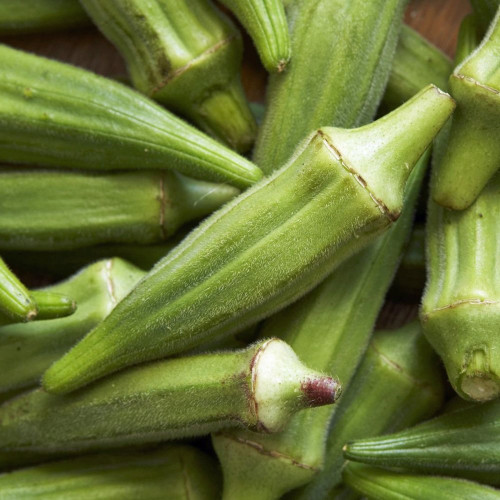Type: Open Pollinated / Heirloom
Relative Days: 56
Skin Color: Dark Green
Life Cycle: Perennial in warmer, frost-free regions but typically grown as an Annual in most climates
Characteristics:
Clemson Spineless Okra is a classic variety developed in 1939 and remains a garden standard. This 1939 AAS winner produces dark green, slightly grooved pods that are straight, pointed, and entirely spineless, making them easy to harvest. Pods grow 7 to 9 inches long but are best picked young and tender for optimal flavor. Plants reach about 4 feet tall and thrive in heat and both humid or dry conditions, offering uniform, heavy yields all season.
Okra (Abelmoschus esculentus)
Okra is a popular vegetable commonly found in both home and commercial gardens. A significant acreage is planted for the soup and frozen food industry. While new varieties of okra are not introduced as frequently as some other vegetables, plant breeders and commercial companies continue to improve existing varieties, with some hybrids being released.
Temperature
Plant okra when the soil temperature reaches at least 60°F for good seed germination. Okra thrives in hot, humid summers and requires warm areas with plenty of sunlight.
Soil
Okra grows best in well-drained, fertile soils with good water retention capacity. Avoid planting in very light, sandy soils or those with poor drainage or known hardpans.
Planting
Plant seeds 1 1/2 to 2 inches deep, placing 4 to 6 seeds per foot of row. Thin plants to 8 to 12 inches apart.
Spacing
- Within the row: 18–24 inches
- Between rows: 42–60 inches
Harvest
Okra grown for processing usually produces pods on brittle stems. These pods can be broken off with a snap, leaving the stem attached to the plant. For processing, allow the pods to grow as long as possible without becoming fibrous or hard. If the pod tip snaps off evenly, it is generally still tender.
For more information, please see links below:
Downloadable Copy:
Please click here to download a printable version.





